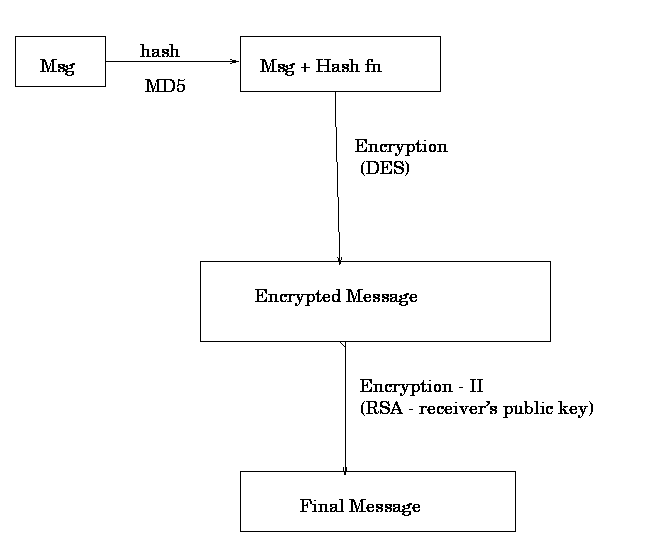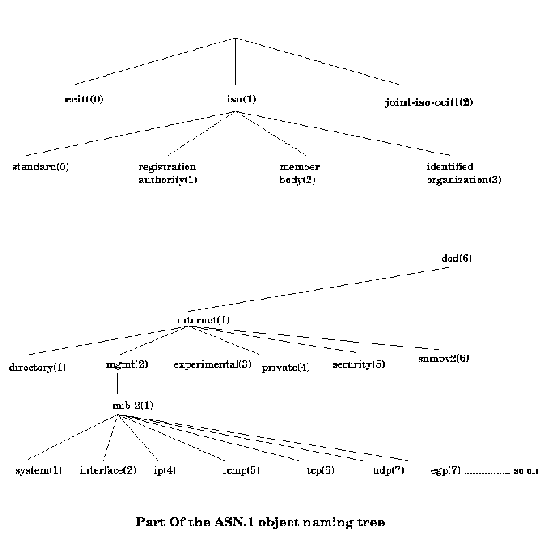


| Message | Description |
| 1. Get_Request | Request the value for a variable |
| 2. Get_Response | Returns the value of the variable asked for |
| 3. Get_Next_Request | Request a variable next to the previous one |
| 4. Set_Request | Set the value of an Object. |
| 5. Trap | Agent to manager Trap report |
| 6. Get_bulk_request | Request a set of variable of same type |
| 7. Inform_Request | Exchange of MIB among Management stations |
The last two options has been actually added in the SNMPv2.
The fourth option need some kind of authentication from the management
station.
(20) IP-Addr-Table
= Sequence of IPAddr-Entry (1)
So when accessing the netmask
of some IP-entity the variable name wld be :
Here since Ip-address the unique
key to index any member of the array the address can be like :-
Addressing Example :
Following
is an Example of the kind of address one can refer to when fetching a value
in the table :-
IPAddrEntry = SEQUENCE {
IPADDENTRYADDR : IPADDR (1)
Index
: integer (2)
Netmask
: IPAddr (3)
}
1.3.6.1.2.4.20 .1.3.key-value
1.3.6.1.2.4.20.1.3.128.10.2.3
back to top
Prev| Next |
Index